The lotus plant holds a special significance in Indian culture. The lotus is the national flower of India and also finds widespread use in Hinduism and Buddhism. It is considered to be a symbol of purity. It is a plant which has been used as a component of traditional Asian and Southeast Asian traditional medicine since ancient times.
The stem of the lotus plant or kamal kakdi as we call it in Hindi is a rich source of Vitamin C and potassium. It is also a rich source of zinc, magnesium, copper and iron. Traditionally in India, Rajasthani cuisine uses lotus stems. The steps also find wide usage in Jain or Marwadi cuisine since the communities do not eat roots like onion or garlic. The stems can be used to make a vegetable dish, chips or even a tangy curry. The best part about this stem is that it can be sun dried when it is available in abundance and then stored and consumed throughout the year.
The stems have good vasodilator properties. They help in blood circulation in the body and also help to lower blood pressure. The stem lies beneath the slushy, muddy waters in which the plant grows and is technically called the rhizome. This is why it is commonly confused as a root, when in fact, it is a stem.
I prefer to make the stems with a spicy gram flour mixture. Served hot with piping hot chappatis/paranthas and mildly flavoured daal/pulses, it makes for a perfect afternoon or evening meal.
INGREDIENTS
- ½ kg lotus stems
- ½ cup gram flour/besan
- Ghee 2 + 2 tablespoons
- ½ teaspoon asafetida or heeng
- 1 teaspoon cumin seeds
- 1 teaspoon cumin powder
- 2 teaspoon coriander powder
- 1 teaspoon kashmiri red chilli powder (adjust according to taste)
- 1 teaspoon dried mango powder/amchoor
- 1 teaspoon garam masala powder
- ½ teaspoon pepper powder
- 1 teaspoon chopped ginger
- Salt to taste
- Fresh coriander leaves chopped 1 tablespoon
- 1 large onion chopped
- ½ cup peppers shopped (green, red and yellow)
- 1 green chilli or red chilli chopped
METHOD
Since lotus stems grow in marshy, wet grounds so they are caked with mud. It is imperative that you wash them well. Even if you procure pre-washed stems that are already cut, I still advise you to run them under running tap water.
- Peel the lotus stems, wash and cut them diagonally into 1-2 inch pieces. Make sure that all the pieces are even in size as that will help with uniform cooking.
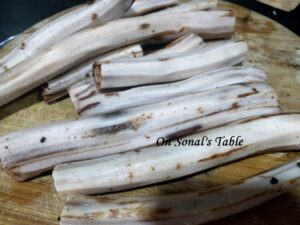
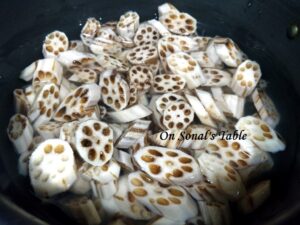
- In a heavy bottomed pan add the cut stems and cover with water. Add a few pinches of salt and bring to a boil. Reduce the heat and cover the pan with a lid. Let the stems cook till they are tender. Depending on the thickness and freshness of the stems, they make take anywhere between 10 minutes to a half hour to turn soft. Once done, remove from heat, strain and keep aside.
- In a separate heavy bottomed pan add 2 tablespoon of ghee/butter and add the gram flour. Roast the gram flour till it emits a fragrant aroma and the colour deepens. This should take about 15 minutes on low heat. Remove the roasted flour from heat and keep aside to cool.
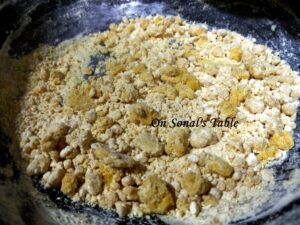
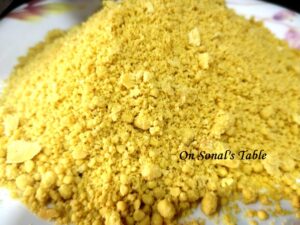
- In the same pan heat the remaining ghee/butter and add the cumin seeds. Once the seeds start to splutter add the asafetida/heeng, ginger and green chilli/red chilli. Sauté for a minute and then tip in the onions. Once the onions soften and turn pink, add the peppers and continue to sauté till the vegetables soften.
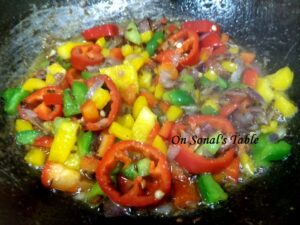
- Add the roasted gram flour and mix well with the vegetables. Add the seasonings – salt, pepper, red chilli powder, dry mango powder, coriander powder, cumin powder. Mix well and sauté for a further 2-3 minutes.
- To the above add a cup of warm water and mix well till you obtain a solution of the gram flour.
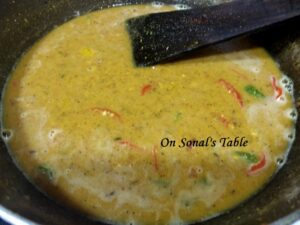
- Tip in the lotus stems and stir to ensure that the gram flour mixture coats all the stems evenly. Cook uncovered on medium to low heat till the water in the mixture evaporates and the vegetable dries.
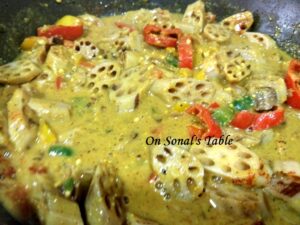
- Add the garam masala powder and mix. Sprinkle in some chopped fresh coriander.
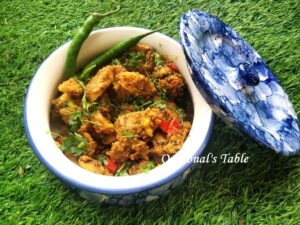
 Sonal Singh On Sonal's Table
Sonal Singh On Sonal's Table

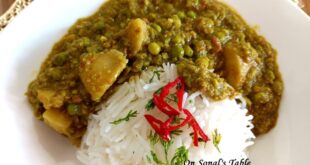
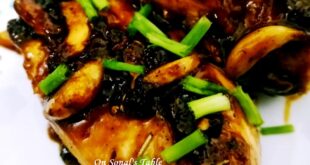
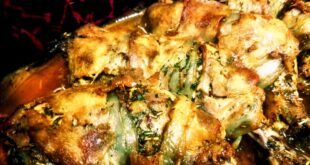
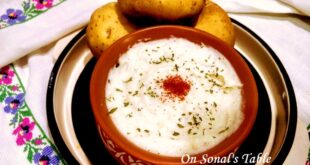
Loved this recipe Sonal. Will try this soon
Thank you so much. Do let me know if you liked it. 🙂